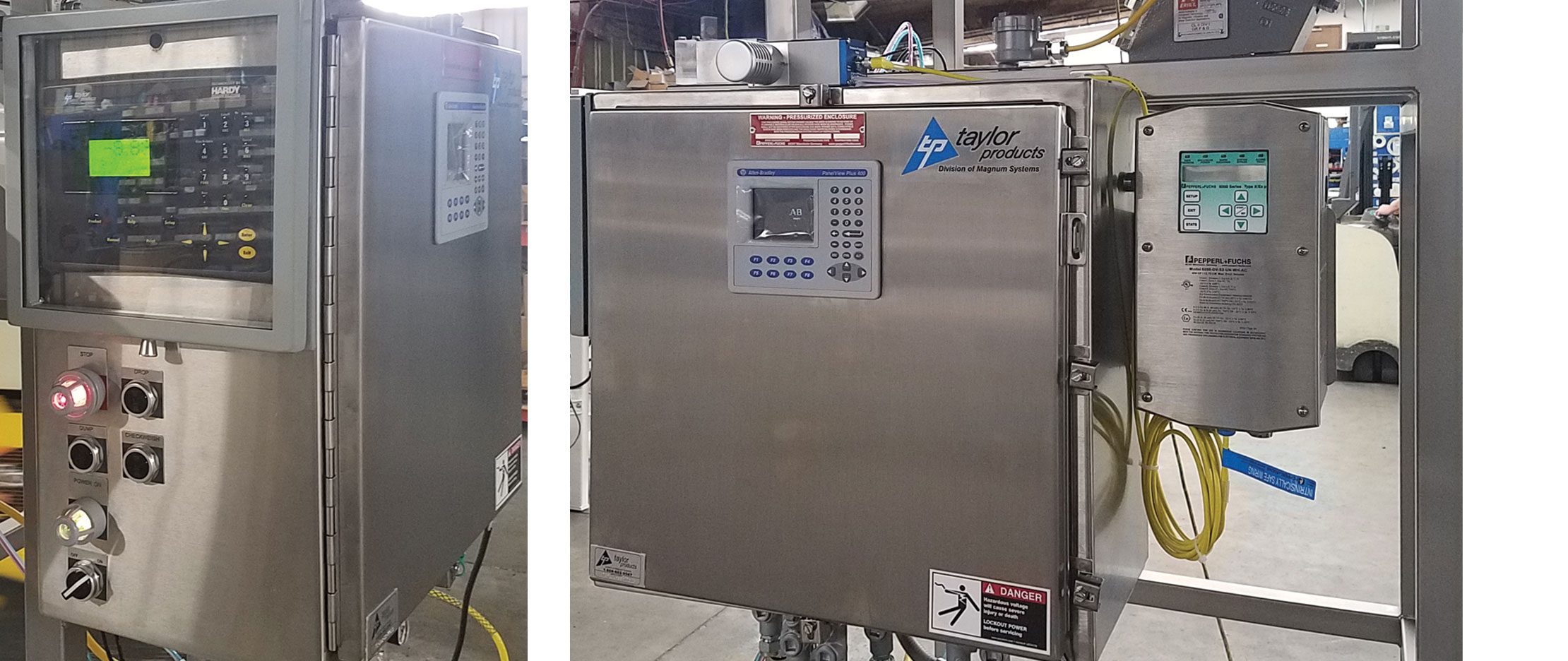

Magnum Systems' Wayne Revell, applications engineer, sheds light on the critical importance and intricate details of explosion protection in industrial settings. When it comes to industrial safety, understanding the complexities of explosion protection is not just important - it's critical to the well-being of personnel and operations. Regularly addressing safety is essential when working in an environment fraught with potential hazards, like bulk material handling, pneumatic conveying and packaging facilities.
"Given the potentially devastating effects of industrial explosions, comprehensive explosion protection is not a luxury—it’s an absolute necessity," says Revell.
Wayne also exposes the importance of adhering to National Electric Code (NEC) guidelines for explosion protection and the many intricacies of room or area classification.
National Electric Code (NEC) Guidelines for Explosion Protection
The NEC is a set of standards developed and published by the National Fire Protection Association (NFPA). The guidelines are used to protect people and property from electrical hazards. Regarding explosion protection, the NEC guides correctly classify hazardous locations based on the type of dangerous materials present.
"Explosion protection is not just an added feature but a fundamental aspect of safety in many industries," Revell explains, addressing the severe consequences of neglecting adequate measures. "The National Electric Code (NEC) sets guidelines that classify rooms or areas based on environmental conditions, specifically considering the potential fire or explosive incident risks. Electrical components and other potential ignition sources must align with safety standards to mitigate the risk of unintended fires or explosions."
Places Prone to Hazards - Area Classification
In addition to following the NEC guidelines, proper room or area classification is crucial in explosion protection. This involves identifying and classifying different zones within a facility based on the type of hazardous materials present.
In environments where combustible dust or gases are present, the risk for fire or explosive events heightens considerably. Magnum Systems stays safe by providing specialized equipment for such dangerous conditions. These measures are vital for creating a safe working environment for staff and machinery.
Class I-rated areas will have ignitable vapor in the room, and Class II-rated areas will have combustible dust. Each class is then broken down into two divisions based on the likelihood of an explosion, Division 1 being high risk and Division 2 being low risk.
"Class I environments might involve gases released from solvents, while Class II might pertain to flour, sugar or coal dust. The division within these classes is critical,” he explains. “Division 1 will always have dust or vapor present in a sufficient volume and mixture with air to cause a fire or explosion. Division 2 occasionally has dust or vapor present—that could cause a fire or explosion.”
How to Play It Safe
For Magnum Systems, ensuring safety means supplying reliable electrical components designed to mitigate risks in these hazardous areas.
"The electrical components and other heat or spark generating devices must meet the safety requirements necessary to prevent unintentional fire or explosion," Revell says.
It is also important to remember that explosion protection goes beyond electrical components and hazardous materials. Proper maintenance of equipment, regular inspections and employee training on safety protocols are all crucial in preventing explosions. In addition, having a comprehensive emergency plan can help minimize damage and injuries in the event of an explosion.
"While electrical safety is the focus of the NEC, other potential ignition sources must be considered,” Revell states. “Equipment that could create sparks, such as hoists with chains, must also meet safety criteria to prevent disasters.”
To help keep safe and sound, Magnum Systems uses electrical components that better protect areas where hazardous dust or gases are present. This includes explosion-rated motors that are rated for a specific location, conduits to replace wire cords, area-rated electrical enclosures to seal out dust or gas, purge kits to pressurize the enclosures to prevent the entry of dust or gas, and area-rated intrinsic barriers, switches, photo eyes and solenoids.
Revell explains, "It’s important to understand that just because an explosion may occur in one part of a facility, doesn’t mean it will occur in another."
Therefore, it is essential to carefully assess and classify each area separately. Also, proper ventilation and monitoring systems should be implemented to prevent the buildup of dangerous flammable materials.
Cutting Through Misconceptions
"The journey to classify an area starts with local codes or insurance demands," Wayne notes. "After a qualified risk assessment, a rating aligns with the NEC. Unfortunately, there are misconceptions. Some businesses don't realize their processes can be hazardous, an oversight that could have dire consequences."
Magnum Systems is at the forefront of adopting and enforcing the latest trends in explosion protection, ensuring compliance and safety despite the challenges against it. Regulatory bodies like the NEC and NFPA are the backbone for setting and enforcing standards, making understanding such guidelines fundamental for workplace safety.
Owners often fail to realize the product they are making has the potential to be hazardous, or the hazard is thought to be so unlikely it is ignored. This is where proper education and adherence to NEC guidelines can make a significant difference.
Understanding the ABCs of explosion protection is crucial in keeping everyone safe.
“Explosion protection should be taken seriously, and companies must dedicate time and resources to ensure they follow the appropriate safety standards," Wayne stresses. "Ultimately, it's about ensuring a safe working area, which sometimes means adapting or rethinking equipment layouts when standard options don't meet legal requirements. It's about doing what's necessary to protect people and operations."
Magnum Systems podcast series, AIM!
RELATED POST
Pneumatically Speaking in Terms of Efficiency, Compliance & Safety
Customized Nuisance Dust Collection and Control in Pneumatic Conveying Systems
Revolutionizing Material Handling For the Dry Bulk Powder Industry: Magnum Systems' Robotic Palletizing Systems
Join Magnum Systems in Celebrating national Safety Month
Related Post
Why Use a Single-Source Systems Integrator Like Magnum Systems?
What Are the Advantages of Dense-Phase Pneumatic Conveying?
Mastering Integration in Manufacturing with Magnum Systems: A Deep Dive Podcast Episode
The Secrets of Valve Bag Sealing: Expert Insights from Magnum Systems